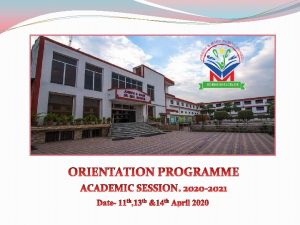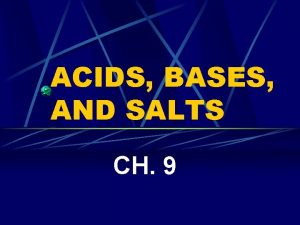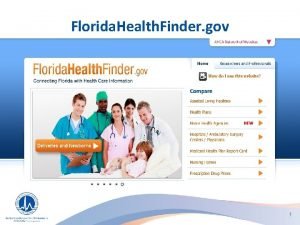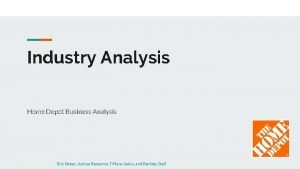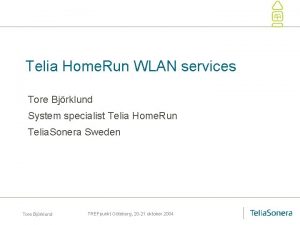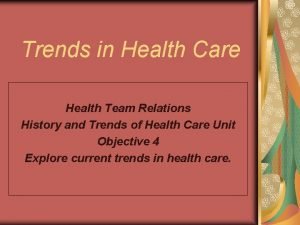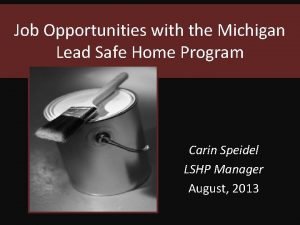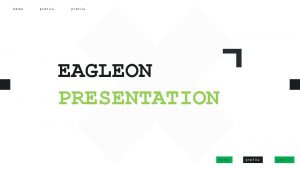Home Topic 1 Topic 2 Topic 3 Topic











































- Slides: 43

Home Topic 1 Topic 2 Topic 3 Topic 4 Topic 5 Topic 6 Topic 7 Topic 8 Topic 9 Topic 10 Topic 11 Topic 12 Topic 13 Topic 14 Topic 15 Topic 16 Topic 17 Topic 18 Topic 19 Topic 20 Topic 21 Topic 22 Topic 23 Topic 24 Question 1 Topic 25 Question 2 Topic 26 Question 3 Topic 27 Question 4 Topic 28 Question 5 Topic 29 Question 6 Topic 30 The End QUIT Summative Quiz for the Animal Welfare and Ethics Course Prof Gail Anderson Animal Welfare Officer University of Adelaide South Australian AECs Welfare and Ethics Training

Home Topic 1 Topic 2 Topic 3 Topic 4 Topic 5 Topic 6 Topic 7 Topic 8 Topic 9 Topic 10 Topic 11 Topic 12 Topic 13 Topic 14 Topic 15 Topic 16 Topic 17 Topic 18 Topic 19 Topic 20 Topic 21 Topic 22 Topic 23 Topic 24 Question 1 Topic 25 Question 2 Topic 26 Question 3 Topic 27 Question 4 Topic 28 Question 5 Topic 29 Question 6 Topic 30 The End Length: 40 questions both MCQs and true/false. Some MCQs may have more than one correct answer. This will be indicated on the question. This is the summative test for the course. It is open book so feel free to review the previous talks. A certificate of completion will be issued to those achieving 80% or more in this test. You may have more than one attempt to get to 80%. Good Luck! You are nearly there. South Australian AECs Welfare and Ethics Training

Home Topic 1 Topic 2 Topic 3 Topic 4 Topic 5 Topic 6 Topic 7 Topic 8 Topic 9 Topic 10 Topic 11 Topic 12 Topic 13 Topic 14 Topic 15 Topic 16 Topic 17 Topic 18 Topic 19 Topic 20 Topic 21 Topic 22 Topic 23 Topic 24 Question 1 Topic 25 Question 2 Topic 26 Question 3 Topic 27 Question 4 Topic 28 Question 5 Topic 29 Question 6 Topic 30 The End Quiz Question 1 Noncompliance has the following potential consequences Prosecution of the institution and, possibly, employees All of the answers are correct Loss of external funding Damage to personal and institutional reputation Your answer was incorrect. Others are true as well Your answer was correct. Your answer was incorrect. Others are true as well

Home Topic 1 Topic 2 Topic 3 Topic 4 Topic 5 Topic 6 Topic 7 Topic 8 Topic 9 Topic 10 Topic 11 Topic 12 Topic 13 Topic 14 Topic 15 Topic 16 Topic 17 Topic 18 Topic 19 Topic 20 Topic 21 Topic 22 Topic 23 Topic 24 Question 1 Topic 25 Question 2 Topic 26 Question 3 Topic 27 Question 4 Topic 28 Question 5 Topic 29 Question 6 Topic 30 The End Quiz Question 2 Q fever is a zoonosis that can be contracted from Sheep placental materials Correct. Cat fur Your answer was incorrect. Feedback for incorrect answer. Aerosols of milk from infected animals Correct. Handling rodents Your answer was incorrect. Feedback for incorrect answer. Reproductive materials from dogs Correct. South Australian AECs Welfare and Ethics Training

Home Topic 1 Topic 2 Topic 3 Topic 4 Topic 5 Topic 6 Topic 7 Topic 8 Topic 9 Topic 10 Topic 11 Topic 12 Topic 13 Topic 14 Topic 15 Topic 16 Topic 17 Topic 18 Topic 19 Topic 20 Topic 21 Topic 22 Topic 23 Topic 24 Question 1 Topic 25 Question 2 Topic 26 Question 3 Topic 27 Question 4 Topic 28 Question 5 Topic 29 Question 6 Topic 30 The End Quiz Question 3 A zoonosis is a disease that? animals can transmit to humans Correct. humans can transmit to animals Your answer was incorrect. This is a reverse zoonosis can be transmitted between zoo animals Your answer was incorrect. A zoonosis can be transmitted to humans from all sorts of animals is a disease of minor importance from rats Your answer was incorrect. Some zoonoses can be very significant e. g Hendra virus or rabies and can come from many different species South Australian AECs Welfare and Ethics Training

Home Topic 1 Topic 2 Topic 3 Topic 4 Topic 5 Topic 6 Topic 7 Topic 8 Topic 9 Topic 10 Topic 11 Topic 12 Topic 13 Topic 14 Topic 15 Topic 16 Topic 17 Topic 18 Topic 19 Topic 20 Topic 21 Topic 22 Topic 23 Topic 24 Question 1 Topic 25 Question 2 Topic 26 Question 3 Topic 27 Question 4 Topic 28 Question 5 Topic 29 Question 6 Topic 30 The End Quiz Question 4 The PREPARE Guidelines are designed to: Help guide researchers through the planning & application process Assist with the preparation of papers for publication Your answer was incorrect. Correct. South Australian AECs Welfare and Ethics Training

Home Topic 1 Topic 2 Topic 3 Topic 4 Topic 5 Topic 6 Topic 7 Topic 8 Topic 9 Topic 10 Topic 11 Topic 12 Topic 13 Topic 14 Topic 15 Topic 16 Topic 17 Topic 18 Topic 19 Topic 20 Topic 21 Topic 22 Topic 23 Topic 24 Question 1 Topic 25 Question 2 Topic 26 Question 3 Topic 27 Question 4 Topic 28 Question 5 Topic 29 Question 6 Topic 30 The End Quiz Question 5 Threatening, cramped, barren and/or isolated conditions with unstable social hierarchies may 1. lead to anxiety, fear, panic, frustration, anger, helplessness, loneliness, boredom and depression leading to unexpected variables in research and poor quality data. 2. lead to calmness, content, fulfillment, activity, Correct. competency in new skills leading to unexpected variables in research and poor quality data. Your answer was incorrect. Security, warmth and weather protection are key. 3. stimulate animals to exploit and use their evolutionary adaptations to surmount environmental challenges and gain a sense of control over their lives. Your answer was incorrect. Security, warmth and weather protection are key. 4. lead to anxiety, fear, panic, frustration, anger, helplessness, loneliness, boredom and depression leading to minimization of variables in research and high quality data. Your answer was incorrect. Security, warmth and weather protection are key. South Australian AECs Welfare and Ethics Training

Home Topic 1 Topic 2 Topic 3 Topic 4 Topic 5 Topic 6 Topic 7 Topic 8 Topic 9 Topic 10 Topic 11 Topic 12 Topic 13 Topic 14 Topic 15 Topic 16 Topic 17 Topic 18 Topic 19 Topic 20 Topic 21 Topic 22 Topic 23 Topic 24 Question 1 Topic 25 Question 2 Topic 26 Question 3 Topic 27 Question 4 Topic 28 Question 5 Topic 29 Question 6 Topic 30 The End Quiz Question 6 When seeking permission to use animals, the 3 Rs need to be applied (pick the one best answer only) When answering questions directly related to ‘Reduction’ Your answer was incorrect. All of these answeres are correct When answering questions directly related to ‘Replacement’ Your answer was incorrect. All of these answeres are correct When answering questions directly related to ‘Refinement Your answer was incorrect. All of these answeres are correct Correct. All of the above South Australian AECs Welfare and Ethics Training

Home Topic 1 Topic 2 Topic 3 Topic 4 Topic 5 Topic 6 Topic 7 Topic 8 Topic 9 Topic 10 Topic 11 Topic 12 Topic 13 Topic 14 Topic 15 Topic 16 Topic 17 Topic 18 Topic 19 Topic 20 Topic 21 Topic 22 Topic 23 Topic 24 Question 1 Topic 25 Question 2 Topic 26 Question 3 Topic 27 Question 4 Topic 28 Question 5 Topic 29 Question 6 Topic 30 The End Quiz Question 7 A social licence allows researchers to: Drink on the job Your answer was incorrect. Continue to use animals in their work Correct. Take their animals home each night Your answer was incorrect. Continue to use animals in their work Bypass the AEC approval process Your answer was incorrect. Continue to use animals in their work South Australian AECs Welfare and Ethics Training

Home Topic 1 Topic 2 Topic 3 Topic 4 Topic 5 Topic 6 Topic 7 Topic 8 Topic 9 Topic 10 Topic 11 Topic 12 Topic 13 Topic 14 Topic 15 Topic 16 Topic 17 Topic 18 Topic 19 Topic 20 Topic 21 Topic 22 Topic 23 Topic 24 Question 1 Topic 25 Question 2 Topic 26 Question 3 Topic 27 Question 4 Topic 28 Question 5 Topic 29 Question 6 Topic 30 The End Quiz Question 8 The person ultimately responsible for the welfare of animals used in research and teaching is? The chair of the animal ethics committee Your answer was incorrect. The researcher or teacher is the responsible person. The animal house manager Incorrect -The researcher or teacher is the responsible person The animal welfare officer Your answer was incorrect. The researcher or teacher is the responsible person The head of the institution or department Your answer was incorrect. The researcher or teacher is the responsible person The principal researcher or teacher Your answer is correct.

Home Topic 1 Topic 2 Topic 3 Topic 4 Topic 5 Topic 6 Topic 7 Topic 8 Topic 9 Topic 10 Topic 11 Topic 12 Topic 13 Topic 14 Topic 15 Topic 16 Topic 17 Topic 18 Topic 19 Topic 20 Topic 21 Topic 22 Topic 23 Topic 24 Question 1 Topic 25 Question 2 Topic 26 Question 3 Topic 27 Question 4 Topic 28 Question 5 Topic 29 Question 6 Topic 30 The End Quiz Question 9 High fidelity models are not necessarily more effective teaching aids than low fidelity models. True or false? False True Low fidelity models can be very effective as training aids. Correct. South Australian AECs Welfare and Ethics Training

Home Topic 1 Topic 2 Topic 3 Topic 4 Topic 5 Topic 6 Topic 7 Topic 8 Topic 9 Topic 10 Topic 11 Topic 12 Topic 13 Topic 14 Topic 15 Topic 16 Topic 17 Topic 18 Topic 19 Topic 20 Topic 21 Topic 22 Topic 23 Topic 24 Question 1 Topic 25 Question 2 Topic 26 Question 3 Topic 27 Question 4 Topic 28 Question 5 Topic 29 Question 6 Topic 30 The End Quiz Question 10 In the context of the scientific use of animals, the 3 Rs refer to Reform, reuse, refinement Recycling, refinement, reduction . Your answer was incorrect. Replacement, reduction, refinement make up the 3 Rs Your answer was incorrect. Replacement, reduction, refinement make up the 3 Rs Correct. Replacement, reduction, refinement Reuse, rewriting, replacement Your answer was incorrect. Replacement, reduction, refinement make up the 3 Rs South Australian AECs Welfare and Ethics Training

Home Topic 1 Topic 2 Topic 3 Topic 4 Topic 5 Topic 6 Topic 7 Topic 8 Topic 9 Topic 10 Topic 11 Topic 12 Topic 13 Topic 14 Topic 15 Topic 16 Topic 17 Topic 18 Topic 19 Topic 20 Topic 21 Topic 22 Topic 23 Topic 24 Question 1 Topic 25 Question 2 Topic 26 Question 3 Topic 27 Question 4 Topic 28 Question 5 Topic 29 Question 6 Topic 30 The End Quiz Question 11 Annual “Statements of Compliance” are required by Government Your answer was correct. Compliance is covered by state law Your employer Your answer was incorrect Funding bodies Your answer was incorrect. Media Your answer was incorrect. RSPCA Your answer was incorrect.

Home Topic 1 Topic 2 Topic 3 Topic 4 Topic 5 Topic 6 Topic 7 Topic 8 Topic 9 Topic 10 Topic 11 Topic 12 Topic 13 Topic 14 Topic 15 Topic 16 Topic 17 Topic 18 Topic 19 Topic 20 Topic 21 Topic 22 Topic 23 Topic 24 Question 1 Topic 25 Question 2 Topic 26 Question 3 Topic 27 Question 4 Topic 28 Question 5 Topic 29 Question 6 Topic 30 The End Quiz Question 12 Refinement is A. concept expounded by Russel and Burch in Humane Principles of Experimental Technique (1959) and involves methods that alleviate or minimize potential pain and distress. Your answer was incorrect. Refinement should enhance well being as well. B. A concept expounded by Russel and Burch in Humane Principles of Experimental Technique (1959) and involves methods that alleviate or minimize potential pain and distress, and enhance animal wellbeing. Correct. C. A concept promoted by Peter Singer his publication Practical Ethics (2011) that involves methods that permit a given purpose of an activity or project to be achieved without the use of animals. Your answer was incorrect. Refinement relates to improving well being of the animals. D. A method for designing scientific experiments that protects the integrity of data and improves the quality of statistical analysis. Your answer was incorrect. Refinement relates to improving well being of the animals. South Australian AECs Welfare and Ethics Training

Home Topic 1 Topic 2 Topic 3 Topic 4 Topic 5 Topic 6 Topic 7 Topic 8 Topic 9 Topic 10 Topic 11 Topic 12 Topic 13 Topic 14 Topic 15 Topic 16 Topic 17 Topic 18 Topic 19 Topic 20 Topic 21 Topic 22 Topic 23 Topic 24 Question 1 Topic 25 Question 2 Topic 26 Question 3 Topic 27 Question 4 Topic 28 Question 5 Topic 29 Question 6 Topic 30 The End Quiz Question 13 Which of the following is unsuitable for use in an ethics approval? What answer? At the is endcorrect of the experiment the animals were sacrificed Your answer was incorrect. The use of the word sacrifice in this context is inappropriate. At the end of the experiment the animals will be humanely killed Correct. The animals will be allowed to die of their disease. Your answer was incorrect. Death is not a suitable end point unless the animal is euthanised. South Australian AECs Welfare and Ethics Training

Home Topic 1 Topic 2 Topic 3 Topic 4 Topic 5 Topic 6 Topic 7 Topic 8 Topic 9 Topic 10 Topic 11 Topic 12 Topic 13 Topic 14 Topic 15 Topic 16 Topic 17 Topic 18 Topic 19 Topic 20 Topic 21 Topic 22 Topic 23 Topic 24 Question 1 Topic 25 Question 2 Topic 26 Question 3 Topic 27 Question 4 Topic 28 Question 5 Topic 29 Question 6 Topic 30 The End Quiz Question 14 Using N/A as an answer in the application for things you think are not relevant is acceptable Always Your answer was incorrect. NA should not be used. It is required that you answer all the questions. Never Correct. Occasionally Your answer was incorrect. NA should not be used. Answer all the questions South Australian AECs Welfare and Ethics Training

Home Topic 1 Topic 2 Topic 3 Topic 4 Topic 5 Topic 6 Topic 7 Topic 8 Topic 9 Topic 10 Topic 11 Topic 12 Topic 13 Topic 14 Topic 15 Topic 16 Topic 17 Topic 18 Topic 19 Topic 20 Topic 21 Topic 22 Topic 23 Topic 24 Question 1 Topic 25 Question 2 Topic 26 Question 3 Topic 27 Question 4 Topic 28 Question 5 Topic 29 Question 6 Topic 30 The End Quiz Question 15 As a researcher, to whom and when should you report an adverse event? To a senior technician within the animal facility as soon as possible Your answer was incorrect. The AWO, the manager of the facility and the PI need to know as soon as possible Immediately to the Animal Welfare Officer, manager of the facility and the primary investigator. Correct, then see if a PM exam is needed and report to the AEC as well. Immediately to the primary investigator and the Animal Welfare Officer. Within one week to the facility manager, the primary investigator and the chair of the AEC Your answer was incorrect. The AWO, the manager of the facility and the PI need to know as soon as possible South Australian AECs Welfare and Ethics Training

Home Topic 1 Topic 2 Topic 3 Topic 4 Topic 5 Topic 6 Topic 7 Topic 8 Topic 9 Topic 10 Topic 11 Topic 12 Topic 13 Topic 14 Topic 15 Topic 16 Topic 17 Topic 18 Topic 19 Topic 20 Topic 21 Topic 22 Topic 23 Topic 24 Question 1 Topic 25 Question 2 Topic 26 Question 3 Topic 27 Question 4 Topic 28 Question 5 Topic 29 Question 6 Topic 30 The End Quiz Question 16 A key concept in providing welfare improvement through refinement is the provision of Your answer was incorrect. Understanding innate behavioural needs is key. 1. Enrichment 2. Innate behavioural needs Correct. Your answer was incorrect. Understanding innate behavioural needs is key. 3. Standardized diets 4. Animal care personnel with an advanced understanding of utilitarian philosophy Your answer was incorrect. Understanding innate behavioural needs is key. South Australian AECs Welfare and Ethics Training

Home Topic 1 Topic 2 Topic 3 Topic 4 Topic 5 Topic 6 Topic 7 Topic 8 Topic 9 Topic 10 Topic 11 Topic 12 Topic 13 Topic 14 Topic 15 Topic 16 Topic 17 Topic 18 Topic 19 Topic 20 Topic 21 Topic 22 Topic 23 Topic 24 Question 1 Topic 25 Question 2 Topic 26 Question 3 Topic 27 Question 4 Topic 28 Question 5 Topic 29 Question 6 Topic 30 The End Quiz Question 17 Surgical techniques can be taught using… All manner of models and materials Correct. Live animals only Your answer was incorrect. There are many models and methods to teach surgery skills to decrease live animal use. Expensive silicone models only Your answer was incorrect. Inexpensive models can be used for many techniques. South Australian AECs Welfare and Ethics Training

Home Topic 1 Topic 2 Topic 3 Topic 4 Topic 5 Topic 6 Topic 7 Topic 8 Topic 9 Topic 10 Topic 11 Topic 12 Topic 13 Topic 14 Topic 15 Topic 16 Topic 17 Topic 18 Topic 19 Topic 20 Topic 21 Topic 22 Topic 23 Topic 24 Question 1 Topic 25 Question 2 Topic 26 Question 3 Topic 27 Question 4 Topic 28 Question 5 Topic 29 Question 6 Topic 30 The End Quiz Question 18 Describing exactly the steps in the experiment including drug doses and procedures performed on the animal being used is too time consuming for busy academics Your answer was incorrect. Not respectful of the committee’s time. necessary to allow assessment of the extent of the impact on their welfare not necessary if it is mentioned in another application about similar work sometimes helpful but not always Correct. Your answer was incorrect. Each application should stand alone Your answer was incorrect. This is always helpful to the committee to fully understand your plan South Australian AECs Welfare and Ethics Training

Home Topic 1 Topic 2 Topic 3 Topic 4 Topic 5 Topic 6 Topic 7 Topic 8 Topic 9 Topic 10 Topic 11 Topic 12 Topic 13 Topic 14 Topic 15 Topic 16 Topic 17 Topic 18 Topic 19 Topic 20 Topic 21 Topic 22 Topic 23 Topic 24 Question 1 Topic 25 Question 2 Topic 26 Question 3 Topic 27 Question 4 Topic 28 Question 5 Topic 29 Question 6 Topic 30 The End Quiz Question 19 Best practice anaesthesia involves insulating animals from cold surfaces so thermostatically controlled heat mats, supporting animals, should be insulated from underlying stainless steel tables because heat will move from a warm to a cold body. This statement is true or false? False True Your answer was incorrect. Insulation will help more warmth stay with the mat and the animal by not having the cold steel table act as a heat sink South Australian AECs Welfare and Ethics Training Correct.

Home Topic 1 Topic 2 Topic 3 Topic 4 Topic 5 Topic 6 Topic 7 Topic 8 Topic 9 Topic 10 Topic 11 Topic 12 Topic 13 Topic 14 Topic 15 Topic 16 Topic 17 Topic 18 Topic 19 Topic 20 Topic 21 Topic 22 Topic 23 Topic 24 Question 1 Topic 25 Question 2 Topic 26 Question 3 Topic 27 Question 4 Topic 28 Question 5 Topic 29 Question 6 Topic 30 The End Quiz Question 20 Working with macropods, such as wallabies, as research animals may expose the researcher to fungal infections such as ringworm Correct. expose the researcher to tapeworm infections such as hydatids Correct. expose the researcher to ticks that may carry protozoal diseases Correct. all of the above are correct Correct. South Australian AECs Welfare and Ethics Training

Home Topic 1 Topic 2 Topic 3 Topic 4 Topic 5 Topic 6 Topic 7 Topic 8 Topic 9 Topic 10 Topic 11 Topic 12 Topic 13 Topic 14 Topic 15 Topic 16 Topic 17 Topic 18 Topic 19 Topic 20 Topic 21 Topic 22 Topic 23 Topic 24 Question 1 Topic 25 Question 2 Topic 26 Question 3 Topic 27 Question 4 Topic 28 Question 5 Topic 29 Question 6 Topic 30 The End Quiz Question 21 Skills training can easily be done in complex multistep sessions even for beginners. Your answer was incorrect. The steps need to be simple and cumulative for complex task training. Always Never Correct. This statement is true most of the time. Your answer was incorrect. Only if the students have cross training expertise Your answer was incorrect. Even if some skills have been mastered, simple steps make learning easier. South Australian AECs Welfare and Ethics Training

Home Topic 1 Topic 2 Topic 3 Topic 4 Topic 5 Topic 6 Topic 7 Topic 8 Topic 9 Topic 10 Topic 11 Topic 12 Topic 13 Topic 14 Topic 15 Topic 16 Topic 17 Topic 18 Topic 19 Topic 20 Topic 21 Topic 22 Topic 23 Topic 24 Question 1 Topic 25 Question 2 Topic 26 Question 3 Topic 27 Question 4 Topic 28 Question 5 Topic 29 Question 6 Topic 30 The End Quiz Question 22 Shelter is provided to animals in order to 1. Provide them with a sense of security from overhead predation, thermoregulation and protection from wind and rain in outdoor environments. 2. Feel good Correct. Your answer was incorrect. Security, warmth and weather protection are key. 3. Simulate the natural environment of their wild ancestors 4. Enable them to ambush their cage mates so they can be the boss in the social hierarchy Your answer was incorrect. Security, warmth and weather protection are key. South Australian AECs Welfare and Ethics Training

Home Topic 1 Topic 2 Topic 3 Topic 4 Topic 5 Topic 6 Topic 7 Topic 8 Topic 9 Topic 10 Topic 11 Topic 12 Topic 13 Topic 14 Topic 15 Topic 16 Topic 17 Topic 18 Topic 19 Topic 20 Topic 21 Topic 22 Topic 23 Topic 24 Question 1 Topic 25 Question 2 Topic 26 Question 3 Topic 27 Question 4 Topic 28 Question 5 Topic 29 Question 6 Topic 30 The End Quiz Question 23 In the event of an unexpected adverse event where the animal has died, or was sick enough to require euthanasia, a post mortem examination should be arranged as soon as practical by the AWO or a capable person in the group. This statement is false as no PM is needed. Unexpected deaths should be investigated so this answer is true. Your answer was incorrect. Feedback for incorrect answer. Correct. South Australian AECs Welfare and Ethics Training

Home Topic 1 Topic 2 Topic 3 Topic 4 Topic 5 Topic 6 Topic 7 Topic 8 Topic 9 Topic 10 Topic 11 Topic 12 Topic 13 Topic 14 Topic 15 Topic 16 Topic 17 Topic 18 Topic 19 Topic 20 Topic 21 Topic 22 Topic 23 Topic 24 Question 1 Topic 25 Question 2 Topic 26 Question 3 Topic 27 Question 4 Topic 28 Question 5 Topic 29 Question 6 Topic 30 The End Quiz Question 24 When an animal dies unexpectedly or is euthanised due to unforeseen complications, the AEC may be notified via the annual progress report. What is correct answer? This statement is false This statement is true Incorrect, the AEC and AWO must be notified soon after the adverse event occurring. Correct, it is too long to wait to only deal with an AE through the annual report mechanism. South Australian AECs Welfare and Ethics Training

Home Topic 1 Topic 2 Topic 3 Topic 4 Topic 5 Topic 6 Topic 7 Topic 8 Topic 9 Topic 10 Topic 11 Topic 12 Topic 13 Topic 14 Topic 15 Topic 16 Topic 17 Topic 18 Topic 19 Topic 20 Topic 21 Topic 22 Topic 23 Topic 24 Question 1 Topic 25 Question 2 Topic 26 Question 3 Topic 27 Question 4 Topic 28 Question 5 Topic 29 Question 6 Topic 30 The End Quiz Question 25 Laboratory animal allergy is not a zoonosis Correct. I is a condition of developed allergy to proteins from lab animals Correct. requires skin or airborne exposure Correct. is more common in people with preexisting allergic conditions Correct. all of the above are true Correct. South Australian AECs Welfare and Ethics Training

Home Topic 1 Topic 2 Topic 3 Topic 4 Topic 5 Topic 6 Topic 7 Topic 8 Topic 9 Topic 10 Topic 11 Topic 12 Topic 13 Topic 14 Topic 15 Topic 16 Topic 17 Topic 18 Topic 19 Topic 20 Topic 21 Topic 22 Topic 23 Topic 24 Question 1 Topic 25 Question 2 Topic 26 Question 3 Topic 27 Question 4 Topic 28 Question 5 Topic 29 Question 6 Topic 30 The End Quiz Question 26 Venepuncture technique teaching can be done using… What is correct answer? Complex catheter sets and pumps Your answer was incorrect. Complexity is not required. Simple iv tubing and bandage materials and fake blood Correct. Live animals only Your answer was incorrect. There are lots of models to help attain venepuncture skills Leather and plastic models Your answer was incorrect. Simple models work well for this. South Australian AECs Welfare and Ethics Training

Home Topic 1 Topic 2 Topic 3 Topic 4 Topic 5 Topic 6 Topic 7 Topic 8 Topic 9 Topic 10 Topic 11 Topic 12 Topic 13 Topic 14 Topic 15 Topic 16 Topic 17 Topic 18 Topic 19 Topic 20 Topic 21 Topic 22 Topic 23 Topic 24 Question 1 Topic 25 Question 2 Topic 26 Question 3 Topic 27 Question 4 Topic 28 Question 5 Topic 29 Question 6 Topic 30 The End Quiz Question 27 Which of the following are NOT included the 3 Rs? More than one correct answer. Reduction Your answer was incorrect. Responsibility Your answer was correct. Replacement Your answer was incorrect. Refinement Your answer was incorrect. Rehabilitation Your answer was correct.

Home Topic 1 Topic 2 Topic 3 Topic 4 Topic 5 Topic 6 Topic 7 Topic 8 Topic 9 Topic 10 Topic 11 Topic 12 Topic 13 Topic 14 Topic 15 Topic 16 Topic 17 Topic 18 Topic 19 Topic 20 Topic 21 Topic 22 Topic 23 Topic 24 Question 1 Topic 25 Question 2 Topic 26 Question 3 Topic 27 Question 4 Topic 28 Question 5 Topic 29 Question 6 Topic 30 The End Quiz Question 28 A project is approved by the AEC and has commenced. Who is ultimately responsible for all matters that relate to the welfare of the animals concerned? The governing body of the institution Your answer was incorrect. The principal investigator or equivalent Correct – whilst all involved have some responsibility, the PI holds ultimate responsibility The animal ethics committee Your answer was incorrect. The principal investigator or equivalent The animal care staff Your answer was incorrect. The principal investigator or equivalent South Australian AECs Welfare and Ethics Training

Home Topic 1 Topic 2 Topic 3 Topic 4 Topic 5 Topic 6 Topic 7 Topic 8 Topic 9 Topic 10 Topic 11 Topic 12 Topic 13 Topic 14 Topic 15 Topic 16 Topic 17 Topic 18 Topic 19 Topic 20 Topic 21 Topic 22 Topic 23 Topic 24 Question 1 Topic 25 Question 2 Topic 26 Question 3 Topic 27 Question 4 Topic 28 Question 5 Topic 29 Question 6 Topic 30 The End Quiz Question 29 Laboratory animals such as mice and rats have a defined health status. This means that they Your answer was incorrect. They will not carry ringworm only are of no health risk to humans Your answer was incorrect. There is a small risk of bites and scratches still. carry a reduced health risk to other animals and humans have only small parasites that can infect humans Correct. Your answer was incorrect. The gut parasites that rodents may have are not a risk to humans South Australian AECs Welfare and Ethics Training

Home Topic 1 Topic 2 Topic 3 Topic 4 Topic 5 Topic 6 Topic 7 Topic 8 Topic 9 Topic 10 Topic 11 Topic 12 Topic 13 Topic 14 Topic 15 Topic 16 Topic 17 Topic 18 Topic 19 Topic 20 Topic 21 Topic 22 Topic 23 Topic 24 Question 1 Topic 25 Question 2 Topic 26 Question 3 Topic 27 Question 4 Topic 28 Question 5 Topic 29 Question 6 Topic 30 The End Quiz Question 30 Reduction of animal use in the teaching of technical skills is virtually impossible Your answer was incorrect. There are many offerings of models commercially available can be achieved using simulated inanimate models Correct. is doable but is prohibitively expensive Your answer was incorrect. Not all models are expensive and some can be made in house can only be achieved with complex high fidelity models Your answer was incorrect. Low fidelity models can be very effective training tools South Australian AECs Welfare and Ethics Training

Home Topic 1 Topic 2 Topic 3 Topic 4 Topic 5 Topic 6 Topic 7 Topic 8 Topic 9 Topic 10 Topic 11 Topic 12 Topic 13 Topic 14 Topic 15 Topic 16 Topic 17 Topic 18 Topic 19 Topic 20 Topic 21 Topic 22 Topic 23 Topic 24 Question 1 Topic 25 Question 2 Topic 26 Question 3 Topic 27 Question 4 Topic 28 Question 5 Topic 29 Question 6 Topic 30 The End Quiz Question 31 The principal investigator is the one with ultimate responsibility for the welfare of animals on their approved protocol. What is correct answer? This statement is false This statement is true Your answer was incorrect. The PI is the one with final responsibility Correct. South Australian AECs Welfare and Ethics Training

Home Topic 1 Topic 2 Topic 3 Topic 4 Topic 5 Topic 6 Topic 7 Topic 8 Topic 9 Topic 10 Topic 11 Topic 12 Topic 13 Topic 14 Topic 15 Topic 16 Topic 17 Topic 18 Topic 19 Topic 20 Topic 21 Topic 22 Topic 23 Topic 24 Question 1 Topic 25 Question 2 Topic 26 Question 3 Topic 27 Question 4 Topic 28 Question 5 Topic 29 Question 6 Topic 30 The End Quiz Question 32 Mice are considered sentient because they What is the single correct answer? have an excellent optic sensory system Your answer was incorrect. This does not relate to pain perception. have complex pain perception pathways and central recognition of pain Correct. are vocal when handled Your answer was incorrect. This may be due to anxiety rather than pain suckle their pups for several weeks Your answer was incorrect. This behaviour does not prove sentience South Australian AECs Welfare and Ethics Training

Home Topic 1 Topic 2 Topic 3 Topic 4 Topic 5 Topic 6 Topic 7 Topic 8 Topic 9 Topic 10 Topic 11 Topic 12 Topic 13 Topic 14 Topic 15 Topic 16 Topic 17 Topic 18 Topic 19 Topic 20 Topic 21 Topic 22 Topic 23 Topic 24 Question 1 Topic 25 Question 2 Topic 26 Question 3 Topic 27 Question 4 Topic 28 Question 5 Topic 29 Question 6 Topic 30 The End Quiz Question 33 Clinical Record sheets are not part of the ethics approval process and so can be changed by the researchers without prior AEC approval. . Multiple Choice 1 of 3 correct. This statement is always true Your answer was incorrect. The CRS. Forms an integral part of the ethics approval and as such cannot be changed without AEC permission AEC approval is needed to alter the CRS process Correct. The CRS cannot be customised for a more detailed assessment Your answer was incorrect. The CRS can be developed for any protocol with the AWO or lab animal staff and the AEC as part of the approval process South Australian AECs Welfare and Ethics Training

Home Topic 1 Topic 2 Topic 3 Topic 4 Topic 5 Topic 6 Topic 7 Topic 8 Topic 9 Topic 10 Topic 11 Topic 12 Topic 13 Topic 14 Topic 15 Topic 16 Topic 17 Topic 18 Topic 19 Topic 20 Topic 21 Topic 22 Topic 23 Topic 24 Question 1 Topic 25 Question 2 Topic 26 Question 3 Topic 27 Question 4 Topic 28 Question 5 Topic 29 Question 6 Topic 30 The End Quiz Question 34 The term post-minitrephination is suitable for a lay summary What is correct answer? Yes No Your answer was incorrect. This term would reuire definition the first time it was used in an ethics application. Correct. South Australian AECs Welfare and Ethics Training

Home Topic 1 Topic 2 Topic 3 Topic 4 Topic 5 Topic 6 Topic 7 Topic 8 Topic 9 Topic 10 Topic 11 Topic 12 Topic 13 Topic 14 Topic 15 Topic 16 Topic 17 Topic 18 Topic 19 Topic 20 Topic 21 Topic 22 Topic 23 Topic 24 Question 1 Topic 25 Question 2 Topic 26 Question 3 Topic 27 Question 4 Topic 28 Question 5 Topic 29 Question 6 Topic 30 The End Quiz Question 35 Personal protective gear is required … Multiple Choice 1 of 4 correct. Whatalways is correct answer? when handling animals Your answer was incorrect. Hygiene is needed but not PPE necessarily to various extents dependent on the containment level of the animals and facility as well as the risk Correct. including steel capped boots and hard hat Your answer was incorrect. This is more for a construction site Including sterile gloves Your answer was incorrect. Sterile gloves are usually required for surgery or catheter placement South Australian AECs Welfare and Ethics Training

Home Topic 1 Topic 2 Topic 3 Topic 4 Topic 5 Topic 6 Topic 7 Topic 8 Topic 9 Topic 10 Topic 11 Topic 12 Topic 13 Topic 14 Topic 15 Topic 16 Topic 17 Topic 18 Topic 19 Topic 20 Topic 21 Topic 22 Topic 23 Topic 24 Question 1 Topic 25 Question 2 Topic 26 Question 3 Topic 27 Question 4 Topic 28 Question 5 Topic 29 Question 6 Topic 30 The End Quiz Question 36 The Australian Code for the Use and Care of Animals for Scientific Purposes is. . (2 correct answers) Compliance with the code is a condition of all research and teaching licences Enshrined in the Animal Welfare Act itself Just a requirement of some funding bodies An RSPCA wish-list There for guidance only, not a requirement of anything Your answer was correct. Your answer was incorrect. RSPCA reps had input into the code and support it. Your answer was incorrect. The code is key to compliance

Home Topic 1 Topic 2 Topic 3 Topic 4 Topic 5 Topic 6 Topic 7 Topic 8 Topic 9 Topic 10 Topic 11 Topic 12 Topic 13 Topic 14 Topic 15 Topic 16 Topic 17 Topic 18 Topic 19 Topic 20 Topic 21 Topic 22 Topic 23 Topic 24 Question 1 Topic 25 Question 2 Topic 26 Question 3 Topic 27 Question 4 Topic 28 Question 5 Topic 29 Question 6 Topic 30 The End Quiz Question 37 The lay summary can include technical jargon, three letter acronyms and genetically-modified animal strain names without explanation. a) This statement is always true b) This is true only if all terms are explained or defined in plain English Your answer was incorrect. Feedback for incorrect answer. c)This is statement is false Correct. d) Options b and c are correct South Australian AECs Welfare and Ethics Training Correct.

Home Topic 1 Topic 2 Topic 3 Topic 4 Topic 5 Topic 6 Topic 7 Topic 8 Topic 9 Topic 10 Topic 11 Topic 12 Topic 13 Topic 14 Topic 15 Topic 16 Topic 17 Topic 18 Topic 19 Topic 20 Topic 21 Topic 22 Topic 23 Topic 24 Question 1 Topic 25 Question 2 Topic 26 Question 3 Topic 27 Question 4 Topic 28 Question 5 Topic 29 Question 6 Topic 30 The End Quiz Question 38 Setting up a technical skills lab will…? Two correct answers. Cost many thousands of dollars and require full time staff Your answer was incorrect. It may but can be done more cheaply as well. Not always be expensive as low fidelity models can be quite easily bought or made Correct. Be impossible without a dedicated area for the models Your answer was incorrect. Models can be housed in a regular teaching lab. Require some imagination and lateral thinking Correct. South Australian AECs Welfare and Ethics Training

Home Topic 1 Topic 2 Topic 3 Topic 4 Topic 5 Topic 6 Topic 7 Topic 8 Topic 9 Topic 10 Topic 11 Topic 12 Topic 13 Topic 14 Topic 15 Topic 16 Topic 17 Topic 18 Topic 19 Topic 20 Topic 21 Topic 22 Topic 23 Topic 24 Question 1 Topic 25 Question 2 Topic 26 Question 3 Topic 27 Question 4 Topic 28 Question 5 Topic 29 Question 6 Topic 30 The End Quiz Question 39 Working with sheep as research animals carries a small risk of Q fever infection is potentially more dangerous to immune suppressed individuals Correct – all of these answers are true. is riskier if the birth fluids of the sheep are involved All of these answers are true South Australian AECs Welfare and Ethics Training

Home Topic 1 Topic 2 Topic 3 Topic 4 Topic 5 Topic 6 Topic 7 Topic 8 Topic 9 Topic 10 Topic 11 Topic 12 Topic 13 Topic 14 Topic 15 Topic 16 Topic 17 Topic 18 Topic 19 Topic 20 Topic 21 Topic 22 Topic 23 Topic 24 Question 1 Topic 25 Question 2 Topic 26 Question 3 Topic 27 Question 4 Topic 28 Question 5 Topic 29 Question 6 Topic 30 The End Quiz Question 40 Adverse event investigation and reporting are important because… 2 correct answers They allow the AEC to gather statistical data on welfare Your answer was incorrect. The annual reports allow some statistical data to be gained. If the cause for the adverse event is found it can be prevented from happening to other animals Correct. The reports are needed for State level reporting only Your answer was incorrect. State level reporting is based on annual reports Timely intervention can save greater welfare harm occurring Correct. South Australian AECs Welfare and Ethics Training

Home Topic 1 Topic 2 Topic 3 Topic 4 Topic 5 Topic 6 Topic 7 Topic 8 Topic 9 Topic 10 Topic 11 Topic 12 Topic 13 Topic 14 Topic 15 Topic 16 Topic 17 Topic 18 Topic 19 Topic 20 Topic 21 Topic 22 Topic 23 Topic 24 Question 1 Topic 25 Question 2 Topic 26 Question 3 Topic 27 Question 4 Topic 28 Question 5 Topic 29 Question 6 Topic 30 The End HOME The end of the test … please finalise the test process by finding your score and initiating your certificate production to have it sent to you by email. South Australian AECs Welfare and Ethics Training
 Lagi
Lagi Softly and tenderly jesus is calling
Softly and tenderly jesus is calling She said that, home economics stands for the ideal home.
She said that, home economics stands for the ideal home. Perbedaan home care dan home visit
Perbedaan home care dan home visit New mobile home sales oak springs mobile home community
New mobile home sales oak springs mobile home community Home sweet home survival
Home sweet home survival Mobile home parks for sale in sc
Mobile home parks for sale in sc What did you say
What did you say Flower plural
Flower plural Jr rabbin imam pretre
Jr rabbin imam pretre Narrow down the topic
Narrow down the topic Clincher sentence
Clincher sentence Heat conductors
Heat conductors Single family home elevators
Single family home elevators Moj evn
Moj evn Bell aliant high speed ultra
Bell aliant high speed ultra Home tutor elantes
Home tutor elantes My ancestral home
My ancestral home Objective of home furnishing
Objective of home furnishing Examples of mechanical energy
Examples of mechanical energy Emergent literacy
Emergent literacy East or west home is the best
East or west home is the best Home staging
Home staging Home rule 1886
Home rule 1886 Ways to encourage reading at home
Ways to encourage reading at home Www.jmps.org.in home tutorial
Www.jmps.org.in home tutorial Steal away home
Steal away home To1express review
To1express review Horseshoe magnets home depot
Horseshoe magnets home depot Did you stay at home
Did you stay at home Bases found at home
Bases found at home Florida health finder
Florida health finder Persepolis chapter 18 summary
Persepolis chapter 18 summary Home depot industry analysis
Home depot industry analysis Hacs cards
Hacs cards Home textile fabric procurement.
Home textile fabric procurement. Psc 01
Psc 01 Fly away home eve bunting
Fly away home eve bunting Telia hotspot
Telia hotspot Nitrogen rich soil
Nitrogen rich soil Home health care definition
Home health care definition Team vi
Team vi Slow way home
Slow way home Michigan lead safe home program
Michigan lead safe home program

























